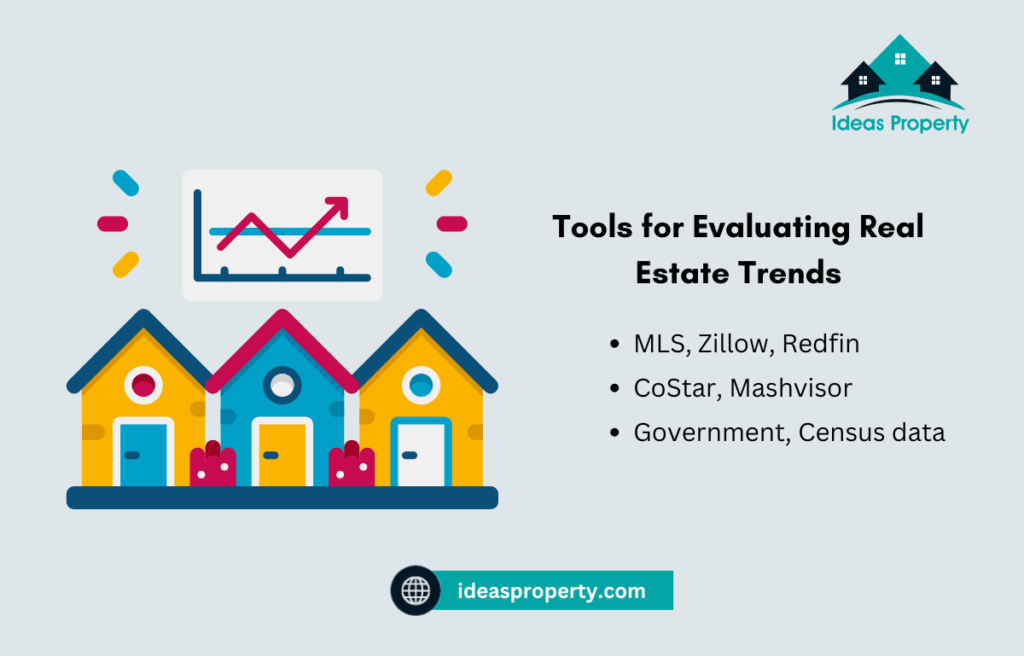Real estate market analysis is a critical process that helps investors, buyers, and sellers make informed decisions based on current market trends and data. By evaluating factors such as property values, supply and demand, interest rates, and economic indicators, market analysis provides a comprehensive understanding of the real estate landscape. This approach allows stakeholders to identify opportunities, assess risks, and optimize their strategies to maximize returns. Whether you’re looking to invest in residential or commercial properties, conducting a thorough market analysis is essential for navigating the complexities of the real estate market.
What is Real Estate Market Analysis and Why is it Important?
Real estate market analysis is a comprehensive evaluation of the factors that influence the real estate market, helping investors, buyers, and sellers make data-driven decisions. By analyzing property values, market trends, economic indicators, and local conditions, real estate market analysis provides critical insights into whether a property is a sound investment. It is a crucial tool for identifying both opportunities and risks in the market, allowing stakeholders to assess the viability of real estate ventures before committing financial resources.
The importance of market analysis extends beyond just making good investment decisions. It helps in setting realistic pricing strategies for property sellers, finding the best deal for buyers, and identifying trends that could influence long-term market conditions. Whether it’s a booming market or a declining one, a proper analysis enables individuals to make decisions that align with their financial goals and the current state of the market, reducing the risk of poor investments or missed opportunities.

How Does Market Analysis Help in Real Estate Investment?
A thorough market analysis empowers real estate investors by providing a detailed understanding of current and projected market conditions. By examining key data points such as property prices, rent trends, vacancy rates, and comparable sales, investors can estimate the potential return on investment (ROI) for a given property. This analysis enables investors to pinpoint undervalued properties, predict future appreciation, and assess the overall financial feasibility of a project.
Moreover, market analysis helps in identifying investment opportunities that align with an investor’s risk tolerance and financial goals. For example, an analysis might reveal that a particular neighborhood is poised for growth due to upcoming infrastructure projects or demographic shifts, offering a chance for higher future returns. Investors can also avoid poor investments by identifying markets that are oversaturated or on the decline, thereby reducing the likelihood of loss.
What Are the Risks of Skipping a Market Analysis?
Skipping a proper real estate market analysis can expose investors, buyers, and sellers to significant risks. Without a clear understanding of market conditions, individuals might overpay for a property, underestimate the time it will take to sell, or fail to recognize declining property values in certain areas. Investors may also miscalculate the rental income potential of a property, leading to lower-than-expected cash flow and diminishing ROI.
In addition, skipping market analysis can lead to poor timing in the real estate cycle. For example, investing in a market that is nearing its peak without understanding the signs of a downturn can result in property devaluation soon after the purchase. Failing to conduct an analysis also prevents investors from identifying hidden costs such as property taxes, repair needs, and insurance costs that could affect long-term profitability. Ultimately, overlooking a comprehensive analysis increases financial risk and can result in poor investment performance.
How Do I Conduct a Real Estate Market Analysis?
Conducting a real estate market analysis is essential for making informed decisions in property investment, buying, or selling. This process involves evaluating both macroeconomic and local market factors to gain a comprehensive understanding of the market’s condition. A thorough market analysis typically includes examining historical property values, studying current trends, assessing demand and supply, and predicting future market performance. Whether you are a first-time investor or a seasoned real estate professional, performing this analysis helps minimize risks and identify lucrative opportunities.
Market analysis also provides insights into competitive properties, helping sellers set appropriate pricing and allowing buyers to negotiate more effectively. It helps ensure that properties are priced fairly based on current market conditions, location, and comparable sales. The analysis process should be methodical, involving the use of real estate data tools, historical trends, and qualitative factors like neighborhood desirability and upcoming development projects that might affect future property values.
What Are the Key Steps in Conducting a Market Analysis?
The first key step in conducting a real estate market analysis is to clearly define the goals of the analysis—whether you are looking to buy, sell, or invest in property. Once the goal is defined, the next step is identifying the local market area you are interested in. It’s important to narrow the focus to specific neighborhoods or regions to get an accurate picture of market trends. For instance, an area’s proximity to schools, transportation, and employment centers will have a significant influence on property values and rental demand.
Next, you’ll want to collect and compare data on recently sold properties in the target area. This typically includes gathering information on comparable properties (also known as “comps”), which are similar in size, age, and condition to the property being analyzed. Factors such as price per square foot, average time on the market, and the ratio of listing price to sale price should be analyzed to identify trends. Comparing this data helps determine whether a property is priced competitively and gives insights into the health of the market.
Finally, after gathering and analyzing the data, it’s crucial to assess future market conditions. Look for factors like planned infrastructure projects, zoning changes, or economic shifts that could affect property values in the future. This forward-looking aspect of the analysis ensures that you are not just making decisions based on current conditions but are also preparing for market changes.

How Do I Gather and Analyze Real Estate Data?
Gathering real estate data requires the use of multiple sources to ensure comprehensive and accurate information. The most common way to collect data is by accessing the Multiple Listing Service (MLS), which provides detailed information on properties currently on the market, as well as historical sales data. Other useful sources include local property tax records, real estate websites like Zillow or Redfin, and government databases that track economic indicators relevant to the housing market.
Once the data is collected, it’s essential to organize and analyze it systematically. Start by comparing similar properties in the area to determine average prices, rental rates, and trends in property appreciation or depreciation. Tools like comparative market analysis (CMA) software can automate much of this process, allowing for quicker and more accurate assessments. When analyzing the data, pay close attention to key performance metrics such as cap rates, gross rental yield, and vacancy rates, which give you a sense of the property’s financial viability.
Moreover, data analysis should include studying economic indicators like interest rates, unemployment rates, and inflation, as these macroeconomic factors can influence housing affordability and market stability. Advanced real estate investors might also use predictive analytics tools to forecast future market trends based on historical data patterns, helping them make better decisions in timing property acquisitions or sales.
What Key Factors Influence Real Estate Market Trends?
Real estate market trends are shaped by a combination of macroeconomic and local factors, all of which play a crucial role in determining property values, rental demand, and investment opportunities. Key factors that influence these trends include economic indicators, interest rates, government policies, supply and demand, and local market conditions. These variables interact to create the broader real estate landscape, and understanding how they affect market trends is critical for investors, buyers, and sellers alike.
For example, a strong national economy typically drives real estate growth, as increased job creation and higher wages boost consumer confidence and demand for housing. Conversely, during economic downturns, real estate markets tend to stagnate or decline as potential buyers and investors become more conservative with their capital. Identifying these patterns and understanding the key factors that influence them allows stakeholders to make better-informed decisions, such as when to buy or sell property or how to adjust investment strategies.
How Do Economic Indicators Shape Real Estate Markets?
Economic indicators like GDP growth, inflation rates, employment levels, and consumer confidence play a significant role in shaping real estate markets. For instance, when the economy is growing, people have more disposable income, which often leads to increased demand for housing, both in home purchases and rental markets. High employment levels and rising wages also contribute to market growth by boosting consumer purchasing power, making real estate more accessible to a larger portion of the population.
On the other hand, rising inflation and interest rates can have a cooling effect on real estate markets. Inflation drives up the cost of goods and services, including construction materials and labor, which in turn increases the cost of new housing developments. Higher interest rates make borrowing more expensive, which reduces the pool of potential buyers, as monthly mortgage payments become less affordable. Understanding these economic indicators allows investors to anticipate market shifts, prepare for downturns, or capitalize on periods of growth.
Government policies like tax incentives, subsidies, or zoning laws also shape real estate markets. For example, a government’s decision to lower interest rates or introduce a first-time homebuyer tax credit can stimulate demand, while regulatory restrictions on new developments can limit supply, driving up property prices.
What Role Do Local Market Conditions Play in Market Trends?
While national economic indicators are crucial, local market conditions often have a more immediate and significant impact on real estate trends within a specific area. Factors like population growth, employment opportunities, infrastructure development, and neighborhood desirability drive demand for housing in local markets. For example, a city experiencing a tech boom or an influx of new businesses may see a rapid increase in demand for both residential and commercial properties, leading to higher property values and rents.
Additionally, local amenities such as proximity to schools, transportation hubs, and recreational areas influence real estate trends. Areas with strong educational institutions, for example, are often in high demand, especially among families looking to purchase homes, which can drive up property prices. Similarly, cities investing in infrastructure, such as new public transportation routes or highways, often see a boost in real estate activity in surrounding areas as those improvements make commuting easier and more attractive.
Local supply and demand dynamics also play a role in determining market trends. A shortage of housing inventory in a growing city can lead to rapid appreciation in property values, while an oversupply of new developments can create a buyer’s market, where prices may stagnate or decline. Analyzing these local conditions allows real estate investors and buyers to understand not only the current state of the market but also predict future changes that could affect property values and investment returns.
How Does Supply and Demand Impact the Real Estate Market Analysis?
Supply and demand are fundamental forces that shape the real estate market, dictating property prices, rental rates, and overall market dynamics. When demand for properties exceeds the available supply, prices typically rise, creating a seller’s market where property owners can command higher sale prices or rental rates. Conversely, when the supply of properties outpaces demand, prices tend to fall, leading to a buyer’s market where purchasers have more negotiation power and sellers may need to lower prices to attract buyers.
In real estate, supply and demand are influenced by various factors, including population growth, economic conditions, interest rates, and government policies. For example, rapid population growth in urban areas often leads to increased demand for housing, while supply might lag due to the time it takes to develop new properties. On the other hand, high construction activity or an influx of new developments can create an oversupply, especially in areas with stagnant or declining population growth. Understanding how supply and demand interact is essential for investors, buyers, and sellers to time their market moves effectively and maximize their financial outcomes.
How Do Shifts in Supply and Demand Affect Property Prices?
Shifts in supply and demand have a direct and often dramatic impact on property prices. In periods of high demand and low supply, property values tend to increase significantly due to competition among buyers. For instance, in fast-growing cities or neighborhoods where housing stock is limited, bidding wars may occur, driving up prices above market value. Similarly, in rental markets, increased demand for housing can lead to higher rents, reducing vacancy rates and creating a more profitable environment for landlords.
Conversely, when supply exceeds demand, property prices may stagnate or even decrease. This often happens in areas where there is a glut of new construction or when economic conditions cause a decline in purchasing power. In these cases, sellers may need to lower their prices to attract buyers, and rental property owners may have to offer incentives, such as reduced rent or free amenities, to fill vacancies. Investors who understand these dynamics can time their purchases and sales to align with favorable market conditions, capitalizing on low prices during a buyer’s market or selling at a premium during a seller’s market.
How Can Investors Respond to Supply and Demand Changes?
Real estate investors can take several strategic actions to respond to changes in supply and demand dynamics. In a seller’s market, where demand outstrips supply, investors might consider selling properties to take advantage of high prices. If selling isn’t the goal, investors can capitalize on the increased demand by raising rental rates or optimizing cash flow from their properties. Additionally, during periods of high demand, investors may focus on value-add strategies, such as property renovations, to further increase property values and returns.
In a buyer’s market, where supply exceeds demand, savvy investors often look for distressed or undervalued properties to purchase at lower prices. These markets present opportunities to acquire real estate at a discount, which can lead to significant returns when the market rebounds. Investors may also focus on markets that have the potential for future growth, such as areas with planned infrastructure improvements or those undergoing gentrification. Diversifying investments geographically or into different property types (residential, commercial, industrial) can also help investors mitigate risks associated with oversupply in one particular area or sector.
By closely monitoring shifts in supply and demand, investors can make informed decisions about when to buy, sell, or hold properties, ensuring they maximize returns while minimizing risks in the real estate market.
What Role Do Interest Rates Play in Real Estate Market Analysis?
Interest rates play a pivotal role in real estate market analysis because they directly affect the cost of borrowing, which in turn influences both property values and investor behavior. When interest rates are low, borrowing becomes cheaper, making it more attractive for buyers and investors to take out loans to purchase real estate. This increased demand often drives up property prices, creating a more competitive market. Conversely, when interest rates rise, borrowing costs increase, leading to reduced affordability and a potential cooling effect on the real estate market as fewer buyers are willing or able to finance properties at higher rates.
For real estate investors, understanding interest rate trends is critical when performing market analysis. Changes in rates can affect not only property prices but also the overall return on investment (ROI). Rising rates can lower investor confidence and reduce cash flow from properties, while falling rates can open up opportunities for refinancing, expanding portfolios, or selling properties at a premium due to heightened demand.
How Do Interest Rate Changes Impact Real Estate Investment?
Interest rate changes have a significant impact on real estate investment by influencing both the cost of financing and the overall market dynamics. When rates are low, investors can borrow more money at a reduced cost, which increases their purchasing power and allows them to invest in higher-value properties or expand their portfolios more easily. Additionally, lower rates typically lead to higher property values because more buyers can afford to enter the market, driving demand. This often results in increased competition for properties and higher sale prices, benefiting sellers and investors looking to offload assets.
On the flip side, rising interest rates make it more expensive to finance real estate transactions, which can suppress demand for both residential and commercial properties. Investors may face higher mortgage payments, leading to reduced cash flow and lower profit margins on rental properties. Additionally, when borrowing costs rise, property values may stagnate or even decline, as fewer buyers are able to afford homes or investment properties at elevated prices. In this scenario, investors might focus on strategies like paying down debt or seeking out cash-flow-positive investments that are less sensitive to interest rate fluctuations.
How Can Buyers and Investors Leverage Low-Interest Rates?
Low-interest rates provide a strategic advantage for both buyers and investors, allowing them to maximize their investments with lower borrowing costs. Buyers can take advantage of low rates by securing mortgages with affordable monthly payments, increasing their buying power. This can allow them to purchase more expensive homes or investment properties than they would be able to afford at higher interest rates. Additionally, locking in a low rate with a fixed-rate mortgage ensures that the buyer can maintain predictable and manageable payments over the long term, even if rates increase in the future.
For real estate investors, low-interest rates create an opportunity to refinance existing properties to reduce monthly payments and increase cash flow. Investors can also leverage these low rates to expand their portfolios by purchasing additional properties at a lower financing cost, thus boosting ROI. Furthermore, low-interest rates may enable investors to finance value-add projects, such as renovations or new developments, at a reduced cost, potentially increasing the property’s value and overall return. Timing investments when rates are favorable is a key strategy for optimizing returns in a fluctuating market.
How Can I Analyze Local Real Estate Market Conditions?
Analyzing local real estate market conditions is crucial for making informed decisions when buying, selling, or investing in property. Local markets often have unique characteristics that differ significantly from national trends, making it essential to focus on localized data such as property prices, rental rates, vacancy rates, and neighborhood trends. This analysis begins by understanding the economic drivers of a specific region, including employment opportunities, infrastructure developments, and population growth. A robust market analysis also considers recent sales data of comparable properties (comps), local demand and supply dynamics, and upcoming developments or zoning changes that could influence future market conditions.
Investors and buyers should also consider the impact of seasonality in the local market. In many regions, real estate activity fluctuates depending on the time of year, with more transactions happening during peak seasons. By understanding these cyclical patterns and staying updated on local market reports, buyers and sellers can time their actions to maximize value. Additionally, examining factors like crime rates, school quality, and access to public transportation can provide further insights into the desirability of a neighborhood and the potential for future property appreciation.
What Tools Can I Use to Evaluate Local Market Trends?
To effectively evaluate local real estate trends, several tools can help gather, analyze, and interpret data. One of the most widely used resources is the Multiple Listing Service (MLS), which provides up-to-date information on properties for sale, sold prices, and days on the market. This data helps identify trends in pricing and demand within a specific area, allowing for a detailed comparative market analysis (CMA). Additionally, real estate websites such as Zillow, Redfin, and Realtor.com offer tools that allow users to track historical property values, rental trends, and market forecasts, giving insights into both current conditions and future expectations.
For a more in-depth analysis, investors can use tools like CoStar for commercial properties or Mashvisor for residential investment analysis. These platforms offer comprehensive data on rental yields, vacancy rates, and neighborhood trends. Local government databases can also be invaluable, providing information on property tax records, zoning changes, and future infrastructure projects that might impact local real estate values. Additionally, demographic data from sources like the U.S. Census Bureau or Esri’s Tapestry Segmentation can help assess the socio-economic composition of a neighborhood, aiding in predicting property demand and growth potential.

How Do Population and Demographics Affect Local Markets?
Population growth and demographic shifts have a profound impact on local real estate markets. Areas experiencing rapid population growth often see increased demand for housing, which can drive up property prices and rental rates. For example, regions with growing job markets or new business developments typically attract an influx of people, leading to a housing shortage that pushes prices upward. Conversely, areas with declining populations may experience reduced demand, causing property values to stagnate or fall. Understanding population trends helps investors and buyers anticipate changes in demand and make more strategic real estate decisions.
Demographic factors such as age, income levels, and family size also influence local real estate markets. For instance, areas with a high percentage of young professionals may see increased demand for apartments and condos, while suburbs with growing numbers of families may experience higher demand for single-family homes near good schools. Additionally, as baby boomers retire and downsize, certain markets may see a surge in demand for smaller homes or retirement communities. By analyzing demographic trends, investors can identify the types of properties most likely to perform well in a particular area and align their investment strategies accordingly.
Conducting a thorough real estate market analysis is essential for anyone looking to make informed decisions in the real estate industry. By understanding key factors such as local market conditions, economic indicators, interest rates, and supply and demand, investors, buyers, and sellers can navigate the complexities of the market with greater confidence. Leveraging data tools and analyzing demographic trends further enhances the ability to predict market movements and capitalize on opportunities, while also minimizing potential risks.
Incorporating real estate tax strategies into market analysis ensures that both short-term and long-term investments are optimized for profitability. By understanding the tax implications of real estate transactions and how they align with broader market trends, investors can maximize their returns while legally minimizing their tax liabilities. This holistic approach—combining market insights with tax strategies—provides a strong foundation for real estate success in any market.











